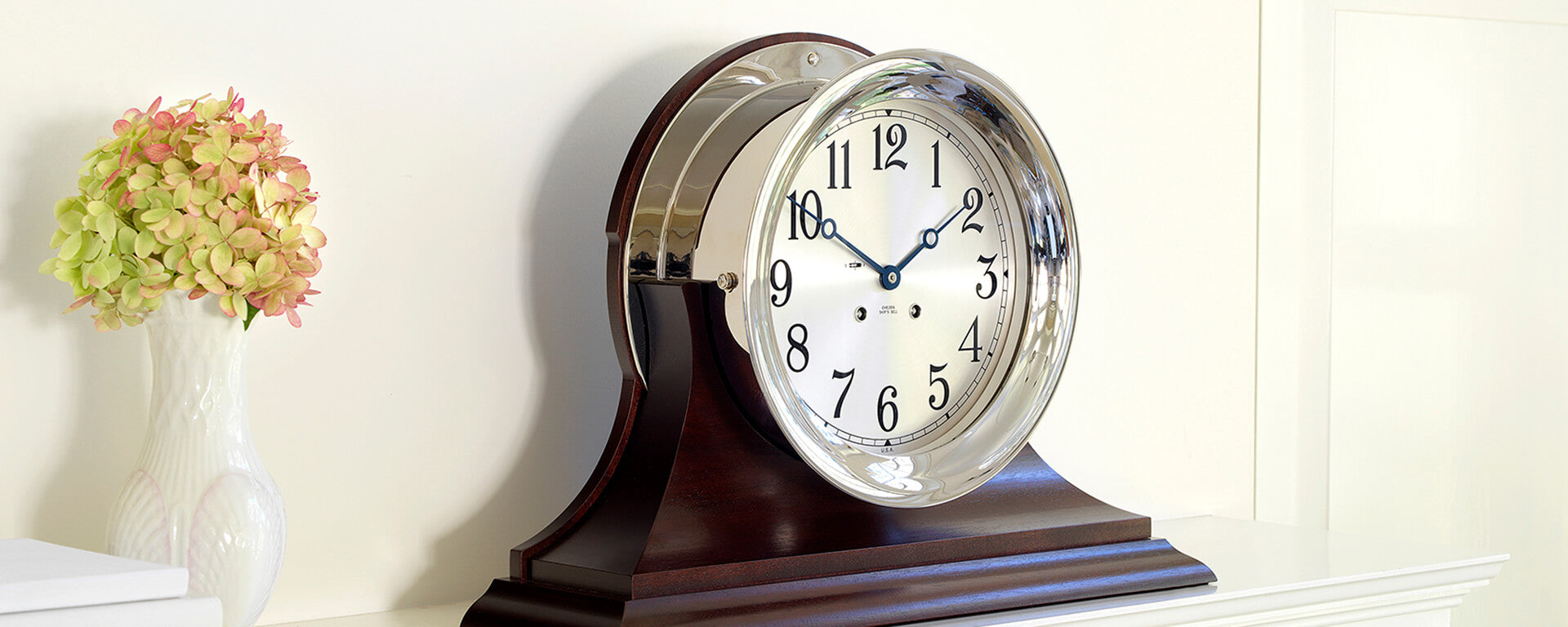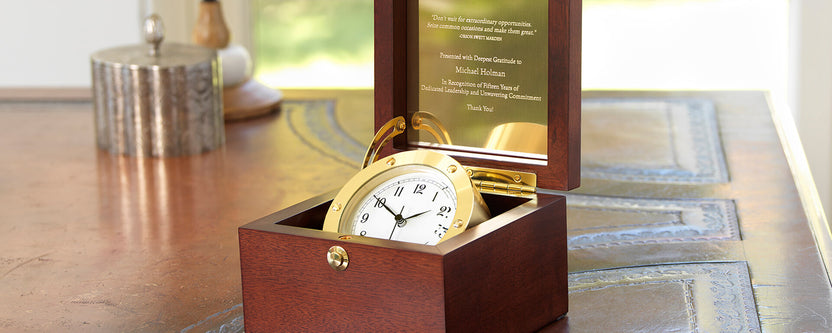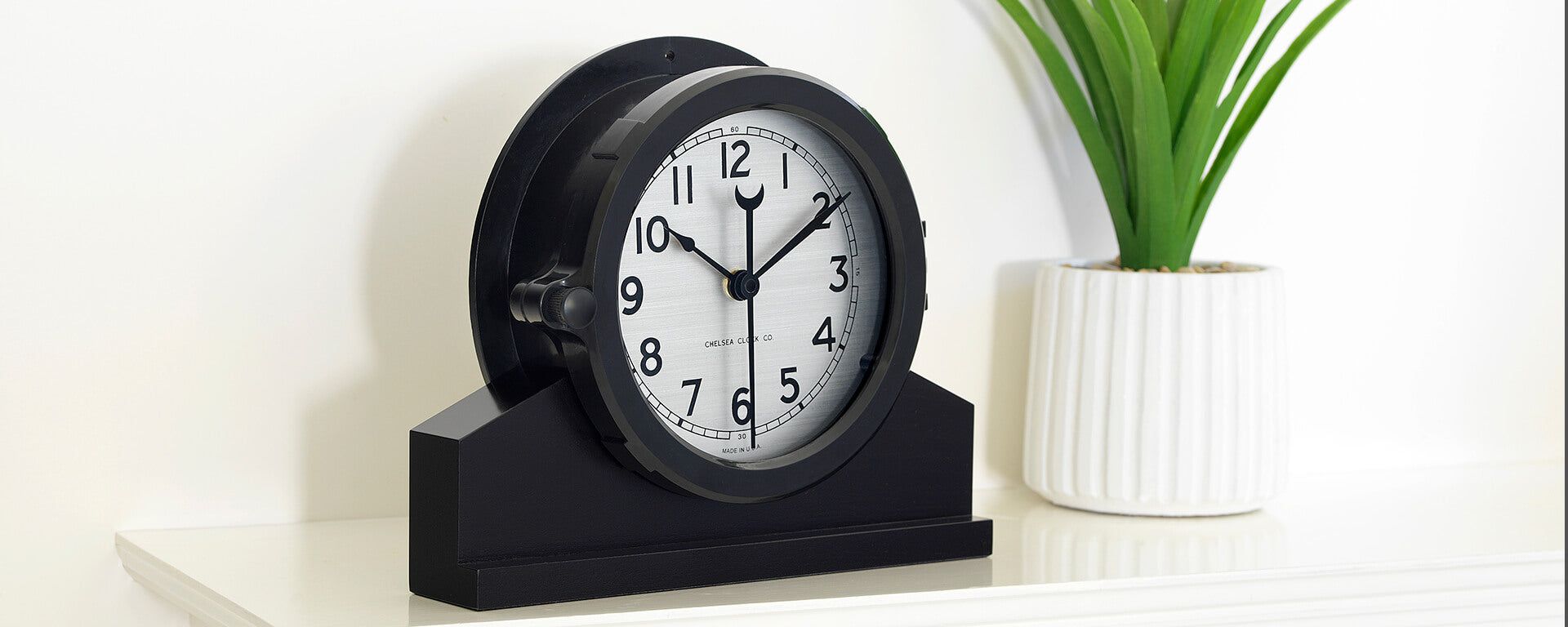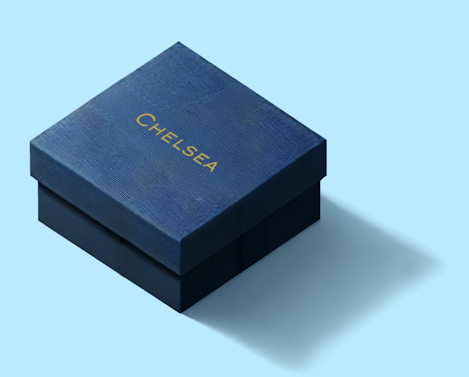How to Set a Tide Clock
Along with the barometer, the tide clock is one of the most useful nautical instruments that ship captains and beachgoers can own. Also called a tide time clock or tide instrument, these tools are used to monitor the tide levels, allowing you to see with a glance when East Coast high tide or low tide occurs. This information is useful when it comes to everything from sailing ventures to home construction.
By having the correct tide clock setting, you'll get accurate information about the position of the tides so you can plan activities. But before we go over how to set a tide clock, it's important to look at why they have become such prized instruments. By learning the history of tide watching and how the time and tide clock mechanism works, we think you will appreciate even more how tide clocks have simplified the process of tracking tides.
The History of Tide Observance
Changes in the tides refer to the periodic rise and fall of sea level due to the gravitational pull of the moon. For those who live and work closely with the sea, monitoring tides has always been crucial. For more than 200 years, the National Oceanic and Atmospheric Administration (NOAA) has kept track of tide information; you can view historical NOAA tides and currents records on their website.
According to the NOAA, their historical records from tide and water-level stations transcend the maritime history of the United States - "from the days when clipper ships relied upon tide predictions to navigate ports and harbors, to modern-day mariners that obtain real-time water levels to ensure that water in channels and under bridges is of sufficient depth to allow huge ships and crane barges to pass through."
Furthermore, commercial and naval wharves, bridges, seawalls, pipelines and many other major engineering marvels are designed with the tides in mind. People like fishermen and surfers must plan excursions based on tide predictions, while architects and construction managers will need to interpret tide information when working on coastal properties.
How a Tide Clock Works
Tide clocks have only one hand and a cycle of about 12 hours and 25 minutes, which coincides with the rise and fall of the ocean's tide. Generally, there's an average of about six hours and 12 minutes between high tide and low tide. High tide is indicated when the clock's hand is at the traditional 12 o'clock position, while low tide is indicated by the 6 o'clock position. These points don't represent the hour of the day; rather, they serve as convenient reference points on the dial. However, hour markings between the high and low tide indicators on the clock represent the number of hours that have passed since the last high or low tide, plus the hours before the next high or low tide.
Tide clocks require resetting about every four months depending on your geographic location. Our tide clocks work best on the East Coast of the United States and Canada. The reason for this is that the tide cycles work differently on the East Coast than on the West Coast. As such, a separate Pacific Ocean tide clock will be required for our West Coast customers. Let's examine tide cycles so you can see why separate clocks are needed for each ocean.
How a Tide Cycle Works
As mentioned, Earth's moon causes the rise and fall of the tides. About 24 hours and 50 minutes pass between the moon's appearance in the night sky each night; this period is referred to as the "lunar day." A tide-clock hand completes its rotation once every 12 hours and 25 minutes, which amounts to twice each lunar day.
Three basic tidal patterns can occur along Earth's major shorelines. Most shores experience two high tides and two low tides each day. When both of the highs and both of the lows are roughly consistent heights, this tidal pattern is referred to as semidiurnal or semi-daily tide. It's the typical cycle found on the East Coast of the U.S.
However, sometimes the heights of the high and low tides differ. This pattern is called a mixed semidiurnal tide. The U.S. West Coast tends to experience mixed semidiurnal tides. In some areas, such as the Gulf of Mexico, there's only one high tide and one low tide per day - and this pattern is simply called diurnal tide.
How to Set a Tide Clock
To set your Chelsea tide clock, follow these simple steps:
- Depending on the model of your Chelsea, you may need to either unscrew the front bezel and remove the dial unit or open the hinged bezel to access the movement.
- Turn the black knob on the back of the movement to adjust the hand to reflect local tide conditions. The NOAA Tide Predictions tool can help with this, and you also can sometimes find tide tables in local newspapers or at marinas.
- Replace the dial unit and screw the bezel back onto the case or close the hinged bezel.










